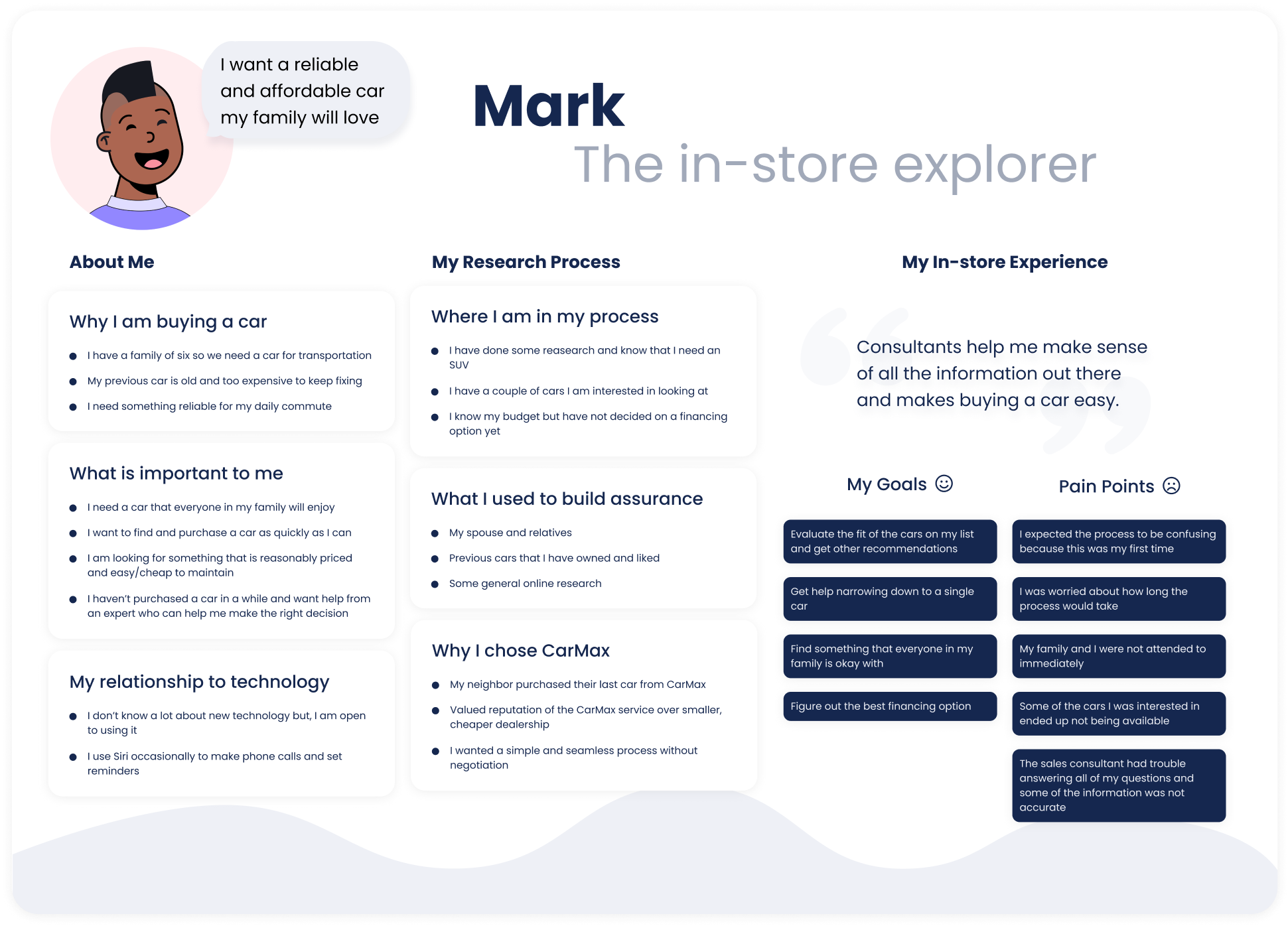Over 250 million people in the U.S. own a car and for the majority of those people it is the 2nd largest purchase they will make in their lives. Our team was challenged to use research and design as tools to determine the best scenarios, modalities, and contexts for a conversational agent to be embedded into the CarMax service.
As practitioners of human centered design, our goals when approaching any challenge are to understand the problem, identify the human needs, develop empathy and discover pain points, ideate opportunities for innovation and, continually iterate and refine the ideas through user testing.
Our research process consisted of hours of interviews, and stacks of sketches, models and storyboards just to get at the right problem to solve.
To tackle the challenge of integrating a conversational agent into this complex service we first focused on understanding how the current car buying experience exists today and the opportunities afforded by conversational technology.
When looking at the used car buying experience we focused on understanding customers’ needs and motivations for purchasing a used car, how CarMax currently helps them do that, and how the CarMax process compares and contrasts with competitors in the field.
We decided to engage experts in the field of conversation design and conversational agents to help us understand more about different kinds of conversation methods, the effectiveness of agent embodiments, when to use verbal and text-based interaction, and factors that affect engagement with the agent and a person’s willingness to disclose personal information.
How can we successfully apply a conversational agent to a service that extends across contexts and modalities?
Equipped with the knowledge from our initial research and experimentation, we wanted to get a more nuanced understanding about the specific problems that exist in the current used car buying experience. Our goal was to begin exploring what high-value opportunity areas exist for a conversational agent to augment the experience.
We identified two major types of shoppers as candidates of use for a conversational agent. One is the Validation Seeker, whose goal is to find a car that is the ‘right’ fit for them. They typically rely on their own research and seek interactions that reward their efforts. They want to come to their own conclusions and are willing to take the time required to do that.
The other type of shopper is the In-Store Explorer who wants to maximize value in their car purchase. They conduct some research before arriving at a dealer, but primarily rely on their experiences with the experts and the cars themselves to narrow their decisions.


In addition to customer personas, we created journey maps to examine of both of these ideal personas move through the car-buying process. By creating 2 separate journeys, we can identify overlapping pain-points (blue highlighted areas below) or areas where the conversational agent may need to adapt to the unique needs of the variety of customers.
We reframed the major pain points we identified in our exploratory research into opportunity areas to investigate with conversational technology. We did this by generating lots of different ideas that met our criteria for a high-value opportunity space which included feasibility for a conversational agent, significance of customer needs, and value to the business.
Moving forward, we wanted to define a set of principles to define how our conversational agent should be designed. The purpose of defining these principles was to help guide us towards a final opportunity space and CA solution that is meaningful and grounded in addressing real user needs
Moving into the summer, our team is looking to explore these three opportunity spaces in more depth as we begin to narrow into a final opportunity space and target user group. From broad (providing access to accurate information) to specific (facilitating test drives), these opportunity spaces will be the groundwork for our conversational agent and provide a valuable boundary to focus our ideation.